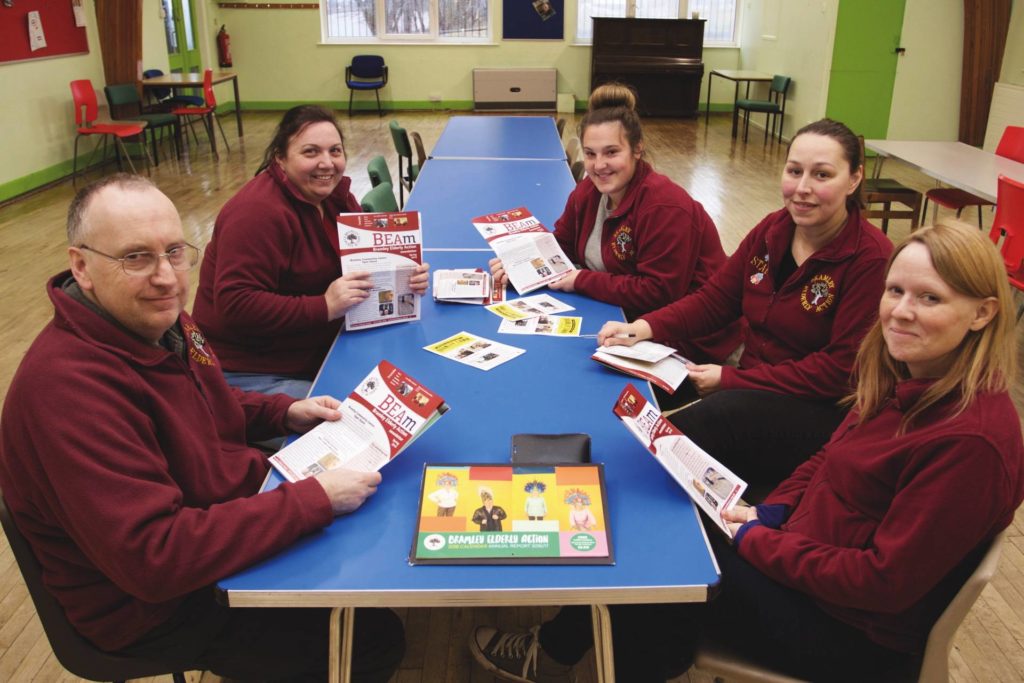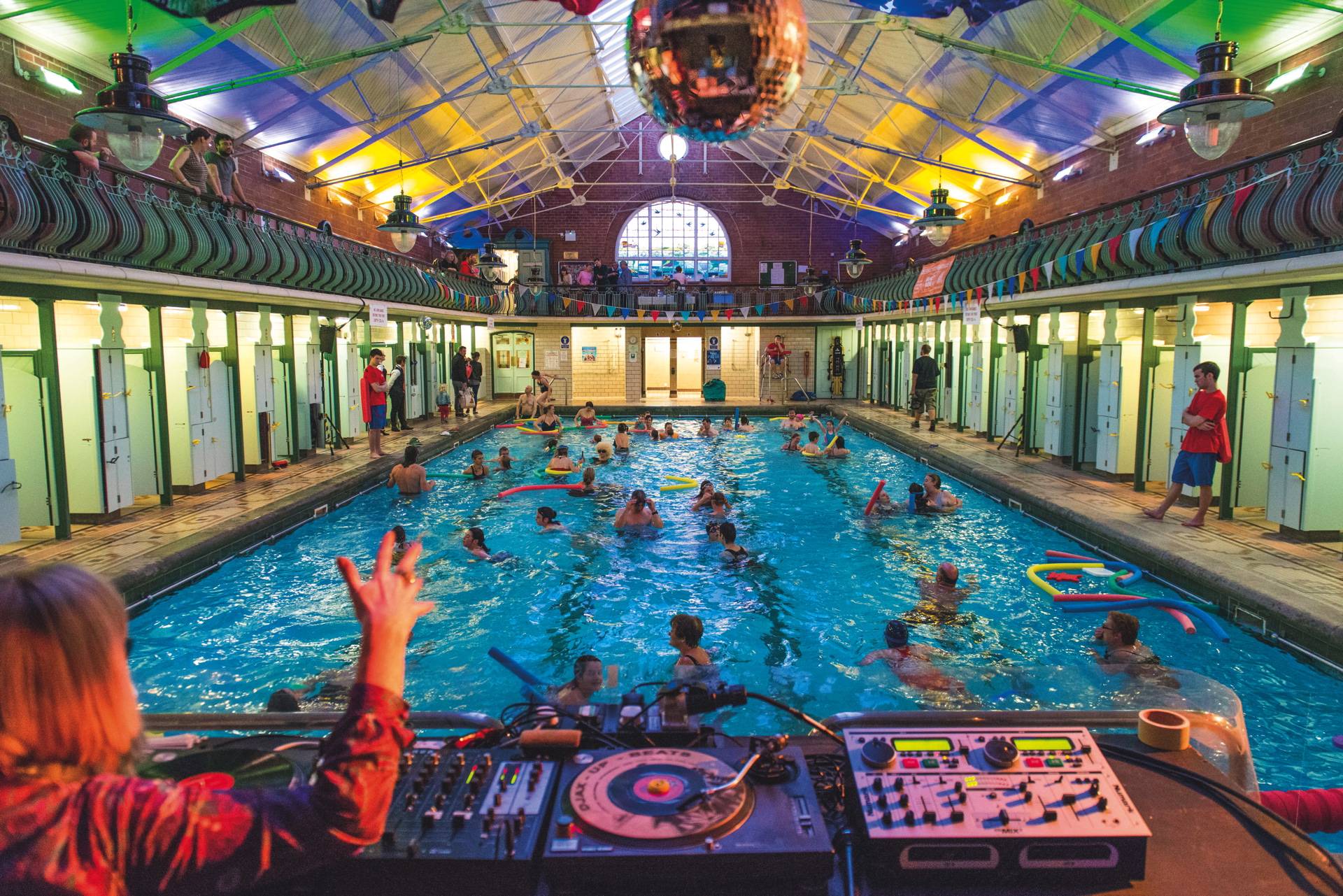Pooling resources
Government austerity measures have left communities fighting to save vital services but in Bramley, Leeds, residents rallied round to save the local baths and have done the same for a community centre
There is no sign – yet – outside the plain one-storey building on Bramley’s Waterloo Lane, but everyone in the area knows it is the community centre. Once paid for and run by Leeds City Council, it now depends heavily on volunteers.
A church hall used to occupy the land but when that burned down half a century ago local people raised money to put up a much larger building, and in the 1970s the church sold it to the council. Today, though, it is run by a voluntary organisation called Bramley Elderly Action (BEA), which was formed in 1994 by a local vicar to support the area’s older people.
Two years ago, when the council announced the centre was under threat due to funding cutbacks, BEA came forward to manage the building. Since January this year it has taken responsibility for weekly activities including lunch clubs, exercise classes and youth groups, with plans to encourage more voluntary groups to run activities that will benefit local people.
“There’s a long history of the community here stepping in and sorting out problems.”
“There’s a long history of the community here stepping in and sorting out problems,” says Fran Graham, operations manager of BEA. “When this place was under threat of closure, people said they just couldn’t let it happen. They remembered, for instance, that they’d had their wedding receptions here, and then their children’s parties, or attended a youth club here. They’d met lifelong friends and loved ones here, been taught valuable skills and celebrated big moments in their lives.
“Closing that door was simply unthinkable for many. So then the conversation moved on to asking how people could be part of the solution and help to keep it going.”
The centre functions because of volunteers like 84-year-old Mary Tyson, who runs a twice-weekly lunch club for pensioners. She admits to sleepless nights when the building’s future was threatened.
“I wasn’t worried for me,” she says. “I can make myself a dinner, but there are people who come here that can’t. We’ve got quite a few with memory loss.”
Bramley is a mainly working-class neighbourhood on the west side of Leeds city centre, bounded by the Leeds-Liverpool Canal to the north and the main road linking Leeds with Bradford to the south. According to government figures, Bramley is ranked the 642nd most deprived economic area out of 32,844 in England.
Built round the core of an old village listed in the 1086 Domesday Book as “Bramelie”, the booming Leeds woollen textile industry of the 19th and early 20th century led to a big population rise. Ernie Wise, one half of Morecambe & Wise, was born there, as was Robert Haywood Jones, the paternal grandfather of David Bowie. No large local employers remain and most residents with jobs have to commute.
The crisis in services for Leeds and other councils began in 2010 when the Conseative-Lib Dem coalition at Westminster slashed overall spending and made the biggest cuts of all to the Department for Communities and Local Government, from which local authorities get most of their funding. By last year, councils had 22 per cent less money to spend per year than they did when Labour left office, and, since adult social care makes up roughly one-third of council budgets, these services have suffered most of all.
Over the last seven years, the annual reductions to Leeds City Council’s core grant funding by Whitehall have totalled £250 million. As a result, the council believes that more than 15,000 people in the city are now living in deprivation compared with 2010. This year, new cuts to council services dictated by the Conservative government’s funding shortfall will amount to £38.2 million.

Leeds City Council still provides some funding from its adult social care budget through a unique initiative called the Leeds Neighbourhood Network, which has been described as the jewel in Leeds’ voluntary sector crown. There are now 37 local schemes working to help older people stay independent, feel included in their community and have choice and control over their lives. Like BEA, they have a share of almost £3 million a year in financial aid from the council but also raise funds through charity shops, sponsored events and donations.
Bramley Community Centre is one of several council facilities taken over by volunteers in the area. In 2013, BEA – which has 1000 members, 150 volunteers and over a dozen staff – also negotiated a lease on Bramley Lawn, a council day centre for dementia sufferers. Besides
still offering dementia support sessions the centre also operates a range of activities, such as a stroke club, a Saturday night community meal and a weekly drop-in for older men, as well as activities run by local groups like Bramley Grows – another volunteer-led initiative getting people of all ages together to improve health and wellbeing through growing food and cooking together.
BEA’s remit is to get older people out and about, help them stay independent as they get older and avoid them suffering from social isolation. Many of their volunteers are retirement age or older, but increasingly younger adults looking to help their community grow and to develop their skills to find work. “We’ve been described as the ministry of fun,” says Graham.
Another prominent local charity taking over functions once performed by the city council is Barca-Leeds, a multi-purpose organisation providing a massive range of services for adults and families. These include drug and alcohol treatment, harm reduction, counselling, and financial and health wellbeing. Barca-Leeds grew out of the recession during the 1990s John Major government, and was formed by a group of Bramley residents who could see the impact of worsening unemployment.
The growing gap between government funding and Leeds Council spending also threatened the closure of Bramley’s splendid Edwardian baths. The Grade II listed building originally opened in 1904 as a pool and public bath house but, when the council announced it could no longer afford to keep the baths open, local people formed an industrial provident society – a co-operative – to run them on a not-for-profit basis. Although the building is still owned by Leeds City Council, the new group has been given a 50 year lease after five successful years, more public swimming than ever before and new ideas – including a pick-your-own community garden (run by volunteers), a triathlon club, and free lifeguard training for local people.
In Bramley there is a belief that the world of caring volunteers described as the “Big Society” by David Cameron was a cynical way of saying: “We’re withdrawing funds for many public services, so you’re on your own mate.” Graham rejects being part of that.
“I don’t think people involved see themselves as flag bearers of Big Society. These initiatives, and many others over the years, show that people saw the problems, found a solution, and decided to try and improve life in this area by volunteering and getting it done.
“It starts with a bunch of people who think, hang on – we want this community centre to stay open, and our children to carry on learning to swim at our local swimming pool, so what’s stopping us? Community services are under pressure, so what do you do? Do you sit back and not respond? Of course you don’t. This community spirit existed long before David Cameron entered politics.”
Government austerity measures have left communities fighting to save vital services but in Bramley, Leeds, residents rallied round to save the local baths and have done the same for a community centre

Leave a reply
Your email address will not be published.